Nationality Italian Period Baroque | Name Guido Reni Movement Baroque | |
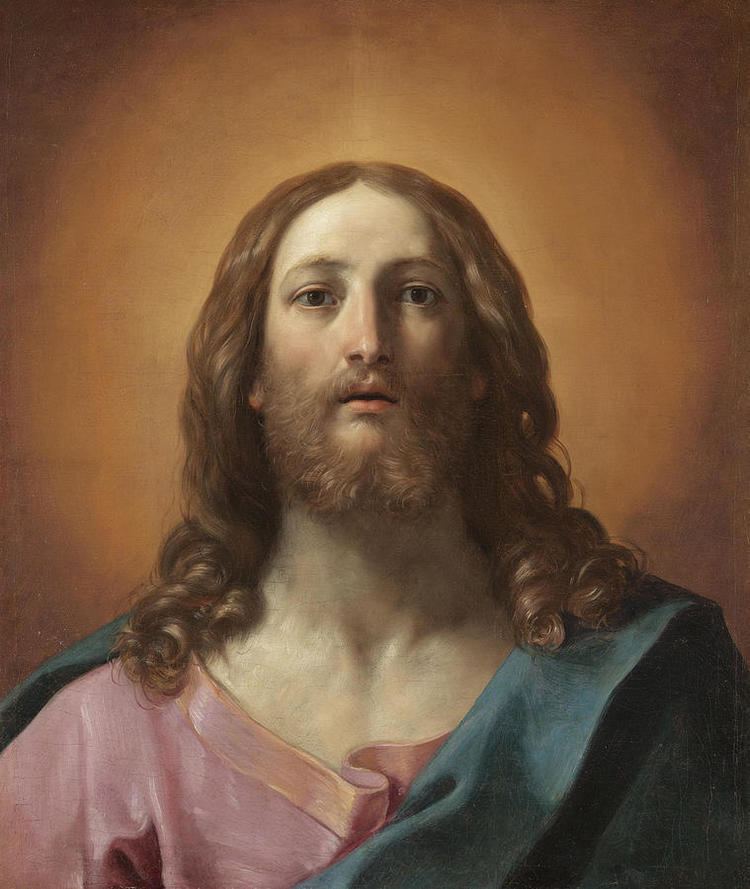 | ||
Artwork Massacre of the Innocents, Atalanta and Hippomenes, The Rape of Europa, The Death of Cleopatra Similar People | ||
Beautiful paintings by guido reni italian painter 1575 1642
Guido Reni ([ˌɡwiːdo ˈrɛːni]; 4 November 1575 – 18 August 1642) was an Italian painter of high-Baroque style. He painted primarily religious works, as well as mythological and allegorical subjects. Active in Rome, Naples, and his native Bologna, he became the dominant figure in the Bolognese School, and his eclectic classicism was widely influential.
Contents
- Beautiful paintings by guido reni italian painter 1575 1642
- Guido reni italian painter 1575 1642 by luloca
- Biography
- Work in Rome
- Work in Naples and return to Bologna
- Pupils and legacy
- Partial anthology of works
- References
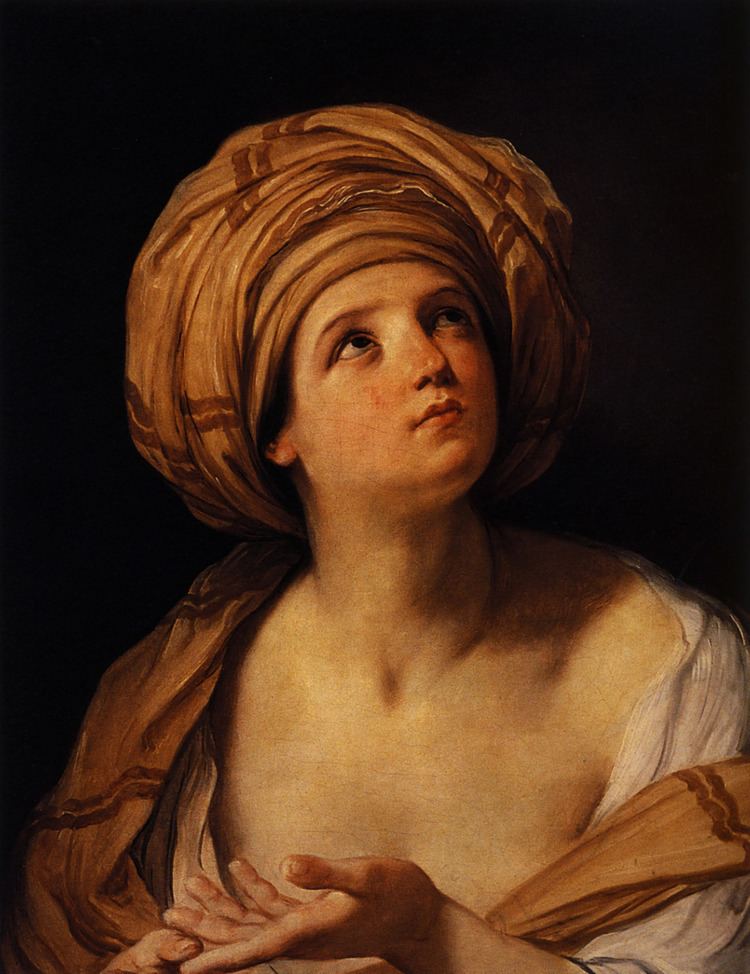
Guido reni italian painter 1575 1642 by luloca
Biography
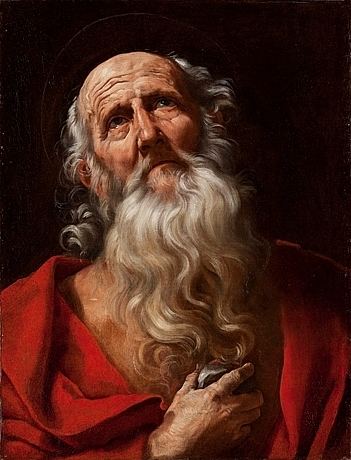
Born in Bologna into a family of musicians, Guido Reni was the only child of Daniele Reni and Ginevra Pozzi. At the age of nine, he was apprenticed to the Bolognese studio of Denis Calvaert. Soon after, he was joined in that studio by Albani and Domenichino. He may also have trained with a painter by the name of Ferrantini. When Reni was about twenty years old, the three Calvaert pupils migrated to the rising rival studio, named Accademia degli Incamminati (Academy of the "newly embarked", or progressives), led by Ludovico Carracci. They went on to form the nucleus of a prolific and successful school of Bolognese painters who followed Lodovico's cousin Annibale Carracci to Rome.
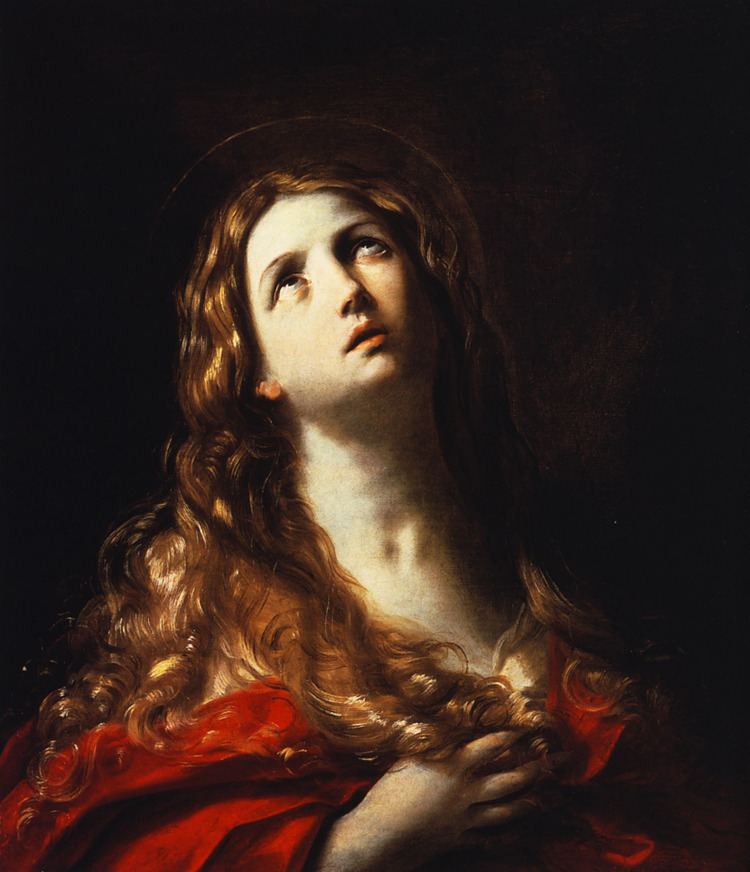
Reni completed commissions for his first altarpieces while in the Carracci academy. He left the academy by 1598, after an argument with Ludovico Carracci over unpaid work. Around this time he made his first prints, a series commemorating Pope Clement VIII's visit to Bologna in 1598.
Work in Rome
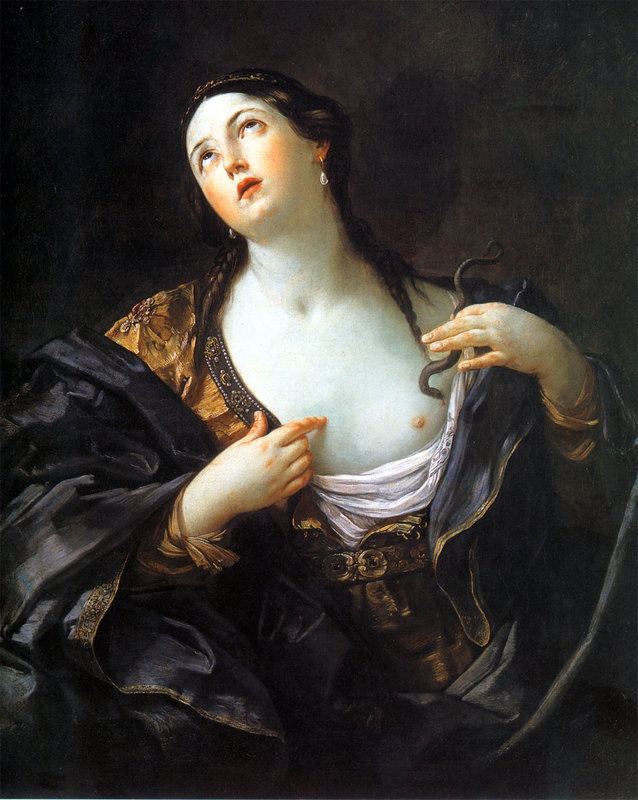
By late 1601, Reni and Albani had moved to Rome to work with the teams led by Annibale Carracci in fresco decoration of the Farnese Palace. During 1601–1604, his main patron was Cardinal Paolo Emilio Sfondrati. By 1604–1605, he received an independent commission for an altarpiece of the Crucifixion of St. Peter. After returning briefly to Bologna, he went back to Rome to become one of the premier painters during the papacy of Paul V (Borghese); between 1607–1614, he was one of the painters most patronized by the Borghese family.
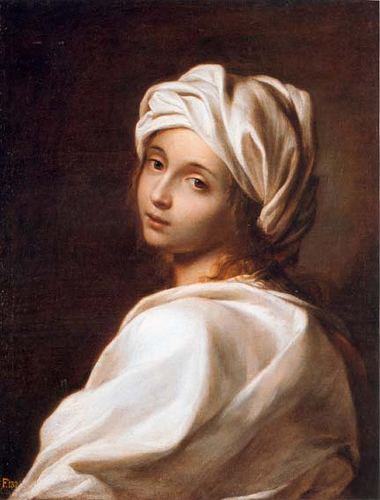
Reni's frescoed ceiling of the large central hall of the Casino dell'Aurora, located in the grounds of the Palazzo Pallavicini-Rospigliosi, is often considered his masterpiece. The building was originally a pavilion commissioned by Cardinal Scipione Borghese; the rear portion overlooks the Piazza Montecavallo and Palazzo del Quirinale. The massive fresco is framed in quadri riportati and depicts Apollo in his Chariot preceded by Dawn (Aurora) bringing light to the world. The work is restrained in classicism, copying poses from Roman sarcophagi, and showing far more simplicity and restraint than Carracci's riotous Triumph of Bacchus and Ariadne in the Farnese. In this painting Reni allies himself more with the sterner Cavaliere d'Arpino, Lanfranco, and Albani "School" of mytho-historic painting, and less with the more crowded frescoes characteristic of Pietro da Cortona. There is little concession to perspective, and the vibrantly colored style is antithetical to the tenebrism of Caravaggio's followers. Documents show that Reni was paid 247 scudi and 54 baiocchi upon completion of his work on 24 September 1616.
In 1630, the Barberini family of Pope Urban VIII commissioned from Reni a painting of the Archangel Michael for the church of Santa Maria della Concezione dei Cappuccini. The painting, completed in 1636, gave rise to an old legend that Reni had represented Satan—crushed under St Michael's foot—with the facial features of Cardinal Giovanni Battista Pamphilj in revenge for a slight.
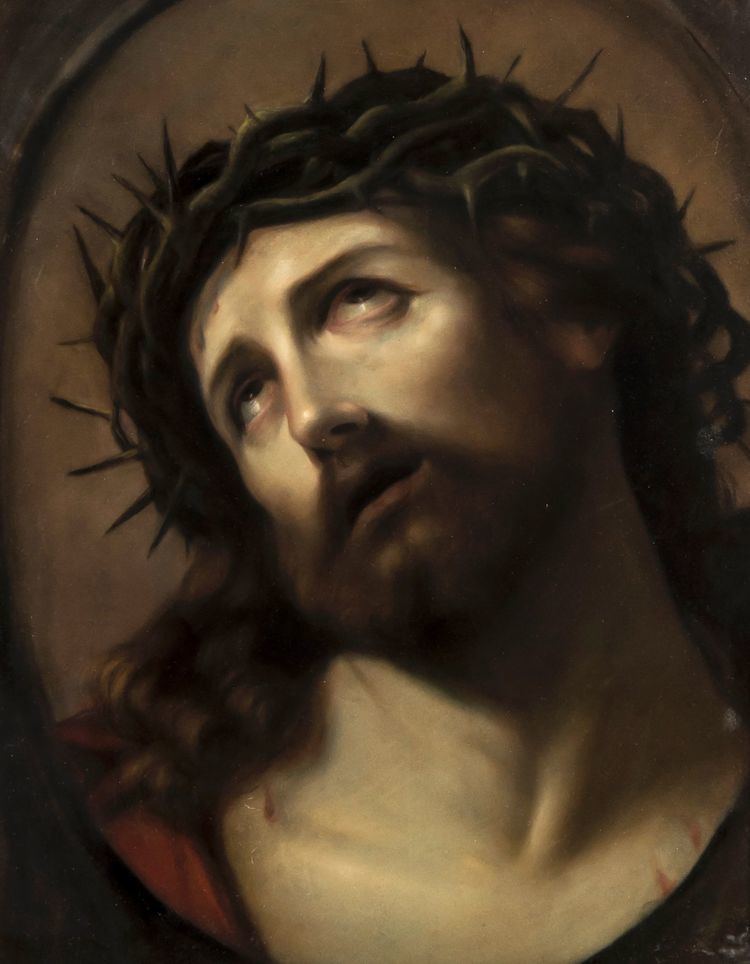
Reni also frescoed the Paoline Chapel of Santa Maria Maggiore in Rome as well as the Aldobrandini wings of the Vatican. According to rumor, the pontifical chapel of Montecavallo (Chapel of the Annunciation) was assigned to Reni to paint. However, because he felt underpaid by the papal ministers, the artist left Rome once again for Bologna, leaving the role of the preeminent artist in Rome to Domenichino.
Work in Naples and return to Bologna
Returning to Bologna more or less permanently after 1614, Reni established a successful and prolific studio there. He was commissioned to decorate the cupola of the chapel of Saint Dominic in Bologna's Basilica of San Domenico between 1613 and 1615, resulting in the radiant fresco Saint Dominic in Glory, a masterpiece that can stand comparison with the exquisite Arca di San Domenico below it. He also contributed to the decoration of the Rosary Chapel in the same church, with a Resurrection; and in 1611 he had already painted for San Domenico a superb Massacre of the Innocents, now in the Pinacoteca Nazionale di Bologna, which became an important reference for the French Neoclassic style, as well as a model for details in Picasso's Guernica.
In 1614–15 he painted "The Israelites Gathering Manna" for a chapel in the cathedral of Ravenna.
Leaving Bologna briefly in 1618, Reni traveled to Naples to complete a commission to paint a ceiling in a chapel of the cathedral of San Gennaro. However, in Naples, other prominent local painters, including Corenzio, Caracciolo and Ribera, were vehemently resistant to competitors, and according to rumor, conspired to poison or otherwise harm Reni (as may have befallen Domenichino in Naples after him). Reni, who had a great fear of being poisoned (and of witchcraft), chose not to outstay his welcome.
After leaving Rome, Reni alternately painted in a variety of styles, true to the eclectic tastes of many of Carracci's trainees. For example, his altarpiece for Samson Victorious formulates stylized poses characteristic of Mannerism. In contrast his Crucifixion and his Atlanta and Hipomenes depict dramatic diagonal movement coupled with the effects of light and shade that portray the influence of Caravaggio. His turbulent and violent Massacre of the Innocents (Pinacoteca, Bologna) is painted in a manner reminiscent of Raphael. In 1625 Prince Władysław Sigismund Vasa of Poland visited the artist's workshop in Bologna during his visit to Western Europe. The close rapport between the painter and the Polish prince resulted in the acquisition of drawings and paintings. In 1630, Reni painted the Pallion del Voto with images of Saints Ignatius of Loyola and Francis Xavier, painted during the plague of 1630 that afflicted Bologna.
By the 1630s, Reni's painting style became looser, less impastoed, and dominated by lighter colors. A compulsive gambler, Reni was often in financial distress despite the steady demand for his paintings. According to his biographer Carlo Cesare Malvasia, Reni's need to recoup gambling losses resulted in rushed execution and multiple copies of his works produced by his workshop. Among the paintings of his last years are many unfinished works.
Reni's themes are mostly biblical and mythological. He painted few portraits; those of Sixtus V, and Cardinal Bernardino Spada are among the most noteworthy, along with one of his mother (in the Pinacoteca Nazionale di Bologna) and a few self-portraits from both his youth and his old age. (The so‑called "Beatrice Cenci", formerly ascribed to Reni and praised by generations of admirers, is now regarded as a doubtful attribution. Beatrice Cenci was executed in Rome before Reni ever lived there and so could not have sat for the portrait.) Many etchings are attributed to Guido Reni, some after his own paintings and some after other masters. They are spirited, in a light style of delicate lines and dots. Reni's technique was used by the Bolognese school and was the standard for Italian printmakers of his time.
Reni died in Bologna in 1642. He was buried there in the Rosary Chapel of the Basilica of San Domenico; the painter Elisabetta Sirani, whose father had been Reni's pupil and who was considered by some to be the artistic reincarnation of Reni, was later interred in the same tomb.
Pupils and legacy
Reni was the most famous Italian artist of his time. Through his pupils, he had wide-ranging influence on later Baroque. His most distinguished pupil was Simone Cantarini, named Il Pesarese; he painted a portrait of his master, now in the Bolognese Gallery. Reni's other Bolognese pupils included Antonio Randa (who tried to kill his master), Vincenzo Gotti, Emilio Savonanzi, Sebastiano Brunetti, Tommaso Campana, Domenico Maria Canuti, Bartolomeo Marescotti, Giovanni Maria Tamburino, and Pietro Gallinari (Pierino del Signor Guido).
Other artists who trained under Reni include Antonio Buonfanti (il Torricello), Antonio Giarola (Cavalier Coppa), Giovanni Battista Michelini, Guido Cagnacci, Giovanni Boulanger of Troyes, Paolo Biancucci of Lucca, Pietro Ricci or Righi of Lucca, Pietro Lauri Monsu, Giacomo Semenza, Gioseffo and Giovanni Stefano Danedi, Giovanni Giacomo Manno, Carlo Cittadini of Milan, Luigi Scaramuccia, Bernardo Cerva, Francesco Costanzo Cattaneo of Ferrara, Francesco Gessi, and Marco Bandinelli.
Beyond Italy, Reni's influence was important in the style of many Spanish Baroque artists, such as Jusepe de Ribera and Bartolomé Esteban Murillo. His work was greatly appreciated in France—Stendhal believed Reni must have had "a French soul"—and influenced generations of French artists such as Eustache Le Sueur, Charles Le Brun, Joseph-Marie Vien, and Jean-Baptiste Greuze. In the 19th century, Reni's reputation declined as a result of changing taste—epitomized by John Ruskin's censorious judgment that the artist's work was sentimental and false. A revival of interest in Reni has occurred since 1954, when an important retrospective exhibition of his work was mounted in Bologna.
Partial anthology of works
The Louvre contains twenty of his pictures, the National Gallery of London seven, and others once there have now been removed to other public collections. Among the seven is the small Coronation of the Virgin, painted on copper. It was probably painted before the master left Bologna for Rome.
